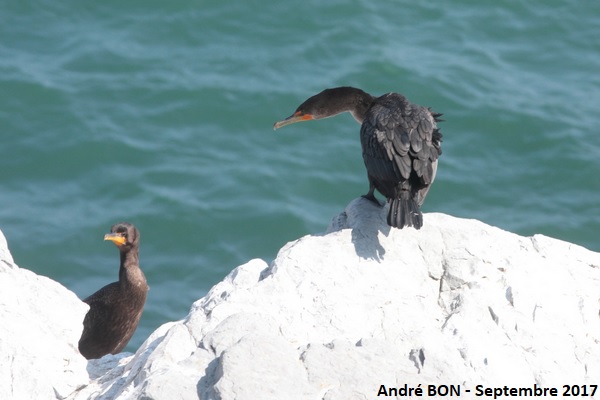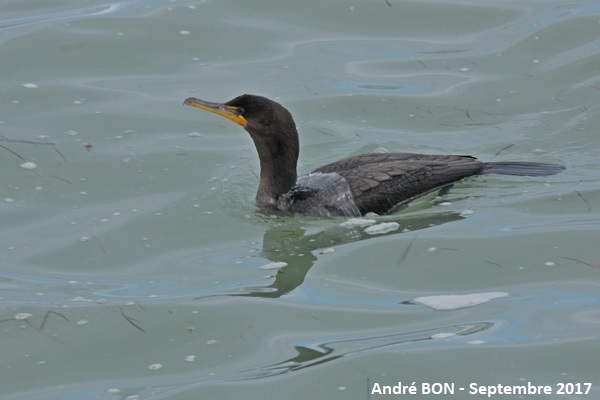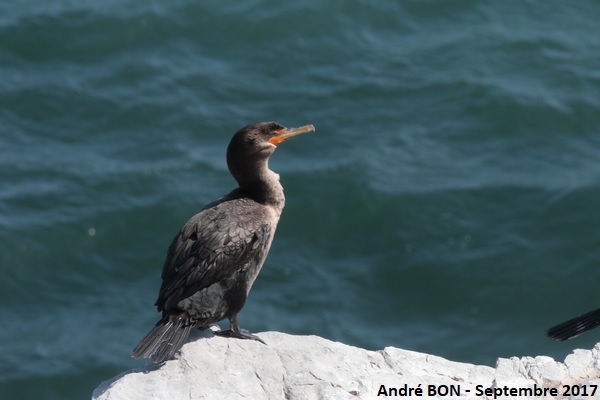


| Double-crested Cormorant (Nannopterum auritum (Lesson, 1831)) |



|
|
Scientific name: Nannopterum auritum (Lesson, 1831) Common name: Double-crested Cormorant French name: Cormoran à aigrettes Order: Suliformes Family: Phalacrocoracidae Size: Body size: 70 to 90 cm; Weight : 1200 to 2500 g; Wingspan: 114 to 123 cm. Habitat: Sea coasts, bays, lakes, ponds, rivers, marshes, lagoons. Food: Piscivorous. Nesting: The Double-crested Cormorant breeds in colonies, near water, in trees or on the ground. There is a clutch of 1 to 7 eggs (often 4) on a date that is highly dependent on latitude (from winter in Florida until early June in southern Alaska). Migration: Partially migratory. Northern populations migrate to the south of the United States in winter. Geographic area: North America and Central America. |
The Double-crested Cormorant has a black plumage with a yellow gular sac and lores in winter and rather orange in summer. It gets its common name from the two small egrets which appear in breeding plumage just above the eyes. They are black, white or a mixture of both depending on the subspecies. The neck is long and strong. The tail is short. The bill is dark in colour. Juveniles have greyish underparts. |
| [To know more about the Double-crested Cormorant] [Next picture] [Top] |

|
A small group of Double-crested Cormorants posed for us, on a rock near the sea shore, at the "Bout-du-monde". Too bad they are no longer in breeding plumage. |
| [To know more about the Double-crested Cormorant] [Next picture] [Previous picture] [Top] |

|
Like all species of Cormorants, the Double-crested Cormorant swims with the body almost completely submerged, ready to dive for a fishing session. |
| [To know more about the Double-crested Cormorant] [Previous picture] [Top] |

|
The grey breast and underparts indicate a young Double-crested Cormorant. |